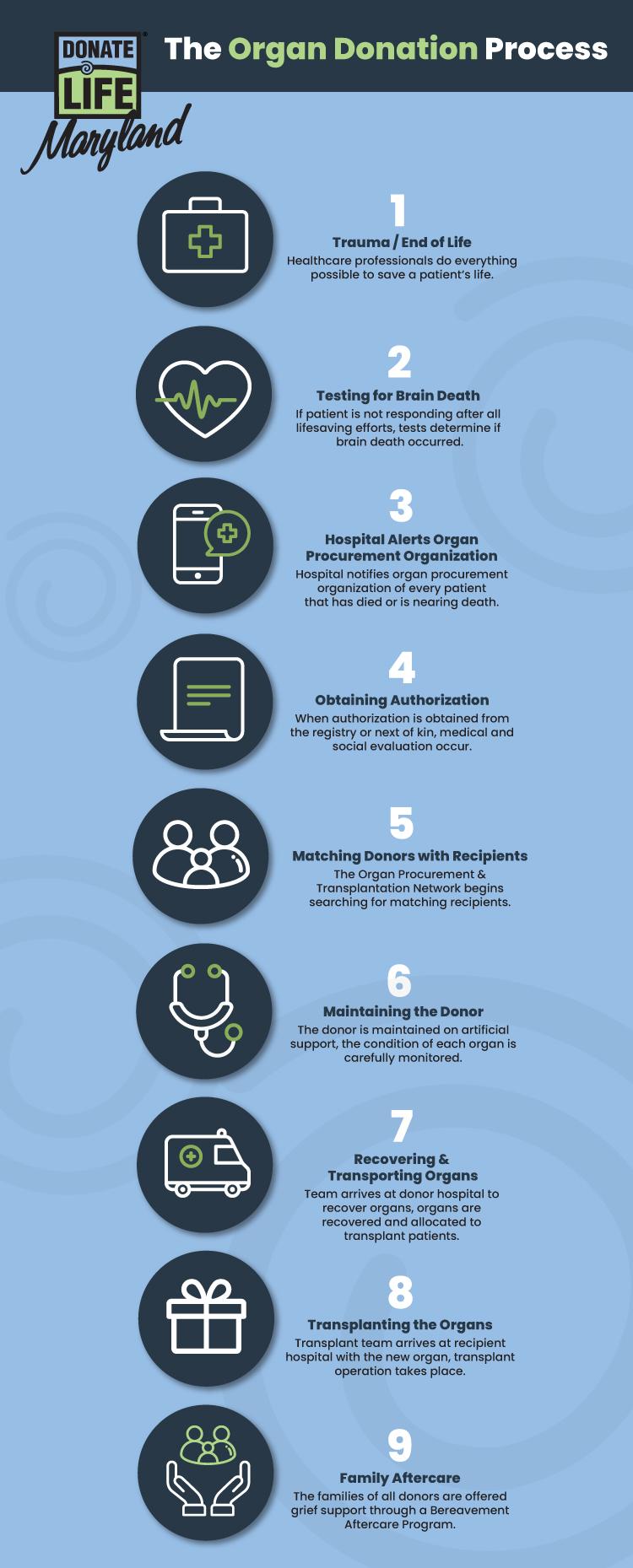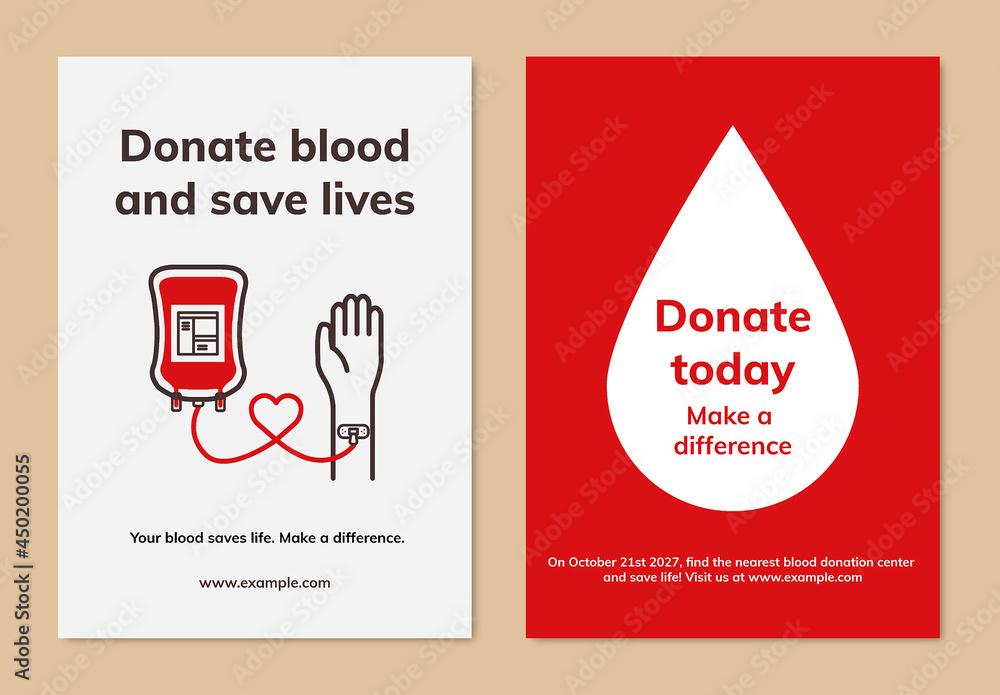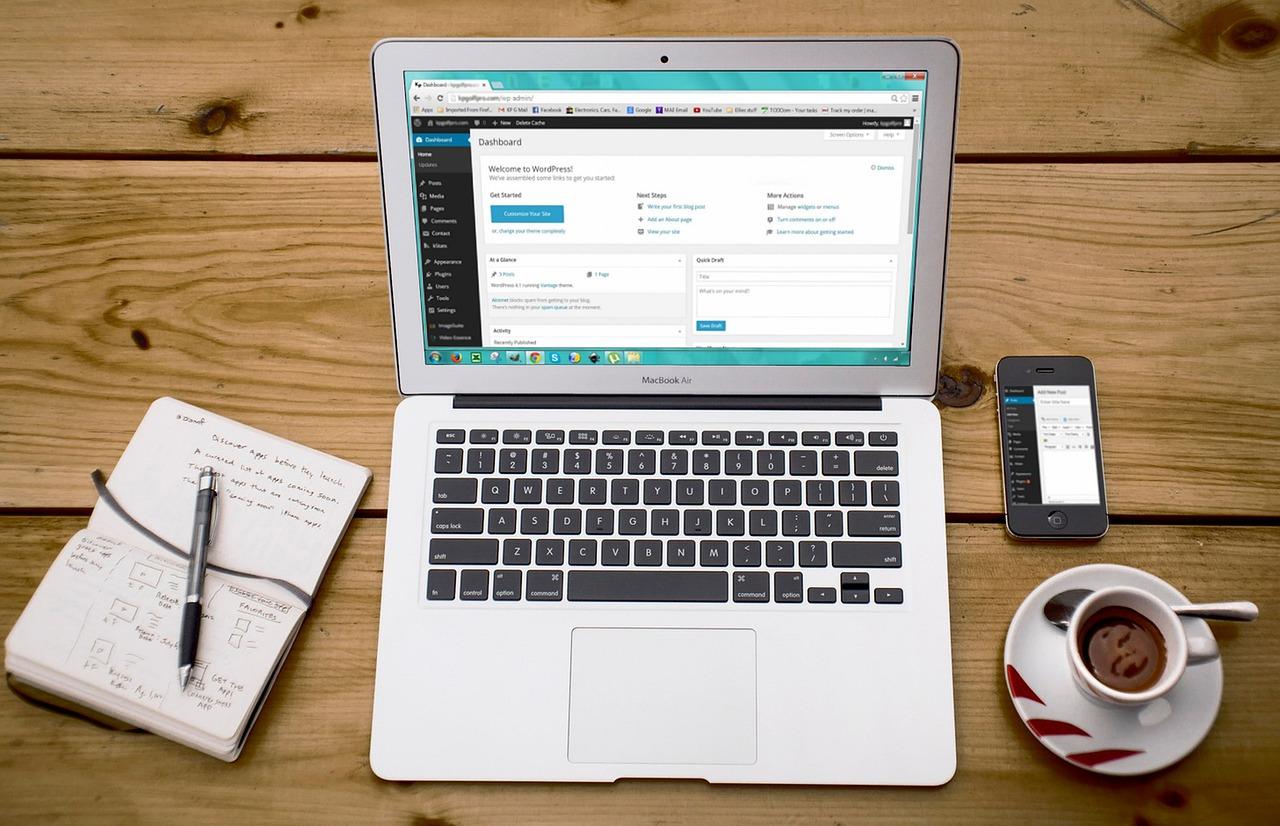Looking to raise funds for your cause? Accepting donations on WordPress is simpler than you think! With the right plugins and a user-friendly setup, you can easily engage supporters and make a real impact. Let’s get started and turn your passion into action!
How to Accept Donations on WordPress: For Non-Profits or Anyone Else
Are you ready to make a difference and support a cause that matters to you? Whether you’re part of a non-profit organization or just someone with a passion for a project that needs funding, accepting donations online can be a game-changer. In today’s digital age, having a seamless way for supporters to contribute is vital. And guess what? WordPress makes it easier than ever! In this article, we’ll guide you through the ins and outs of setting up a donation system on your WordPress site. From choosing the right plugins to customizing your donation forms, we’ll cover everything you need to know to turn your website into a fundraising powerhouse. So grab a cup of coffee, get comfy, and let’s dive right in—your mission deserves to be supported, and we’ll help you make it happen!
Understanding the Importance of Accepting Donations Online
In today’s digital age, the ability to accept donations online has become a cornerstone for non-profits and organizations looking to make a difference. Embracing online donations not only simplifies the process for potential donors but also broadens your reach beyond geographical limitations. When you accept donations online, you open the door to a global audience, creating opportunities for support that might not have been possible through traditional methods.
One of the major advantages of online donations is the convenience it offers. Donors can contribute with just a few clicks, making the act of giving feel seamless and effortless. This ease of use often leads to increased donation amounts and higher participation rates. Consider the following points:
- 24/7 Accessibility: Donors can give anytime, anywhere, removing the constraints of time and location.
- Multiple Payment Options: Offering various payment methods caters to different preferences, increasing the likelihood of donations.
- Instant Gratification: Donors receive immediate confirmation of their contributions, which can enhance their satisfaction and likelihood of donating again.
Moreover, online donations allow for greater engagement with your supporters. By integrating tools such as social media sharing and email newsletters, you can maintain ongoing communication with your donors. This not only fosters a sense of community but also encourages recurring donations. A strong relationship with donors can be cultivated through:
- Thank You Emails: Personalized messages acknowledging their contributions can strengthen donor loyalty.
- Impact Updates: Regular updates on how their donations are making a difference in your cause keeps them informed and engaged.
- Exclusive Content: Offering special content or behind-the-scenes access can make them feel valued and connected.
Furthermore, tracking donations online can provide invaluable insights into donor behavior. Through analytics, organizations can easily identify trends, assess the effectiveness of campaigns, and strategize future fundraising efforts. For instance, you might find that most donations come in during specific times of the year, allowing you to tailor your outreach accordingly.
| Benefit of Online Donations | Description |
|---|---|
| Increased Reach | Connect with donors worldwide. |
| Cost-Effective | Lower operational costs compared to traditional fundraising. |
| Real-Time Feedback | Immediate notifications and insights on donations. |
Ultimately, the importance of accepting donations online cannot be overstated. It not only facilitates the giving process but also enhances donor engagement and drives your mission forward. By leveraging technology, you can create a more inclusive and effective fundraising strategy that resonates with today’s digital-savvy donors.
Choosing the Right Donation Plugin for Your WordPress Site
When it comes to integrating a donation feature into your WordPress site, choosing the right plugin can significantly impact your fundraising efforts. With a plethora of options available, it’s essential to select one that not only meets your organization’s specific needs but also provides a user-friendly experience for your donors. Here are some key factors to consider:
- Payment Options: Ensure the plugin supports multiple payment gateways like PayPal, Stripe, and credit cards. The more options you provide, the easier it will be for donors to contribute.
- Customization Features: Look for plugins that allow you to customize donation forms to align with your branding. This can include logos, color schemes, and personalized messages.
- Recurring Donations: If your organization relies on ongoing support, a plugin that enables recurring donations can be invaluable. This encourages donors to commit to regular contributions.
- User Experience: The donation process should be simple and intuitive. A complicated process can deter potential donors, so choose a plugin that streamlines the experience.
- Reporting Tools: A robust reporting feature helps you track donations, analyze trends, and manage your fundraising strategy effectively.
Let’s compare a few popular donation plugins to understand their unique offerings better:
| Plugin Name | Key Features | Starting Price |
|---|---|---|
| GiveWP | Customizable forms, multiple payment gateways, recurring donations | Free (with premium add-ons) |
| Charitable | Campaign management, recurring donations, donor management | Free (with premium features) |
| PayPal Donations | Simple setup, PayPal integration, customizable button | Free |
Additionally, consider the level of support and documentation provided with each plugin. A plugin with robust support can save you time and frustration when troubleshooting issues or optimizing your donation forms. Also, check for user reviews and ratings to gauge the experiences of others who have used the plugin.
Ultimately, the right donation plugin will empower your organization to collect funds efficiently while making the process enjoyable for your supporters. Take the time to explore and test different options to find the perfect fit for your WordPress site and your fundraising goals.
Setting Up Your Donation Page: Best Practices for Maximum Impact
Creating a donation page that resonates with potential donors is crucial for any fundraising campaign. To maximize your impact, consider these key practices to engage visitors and encourage contributions.
1. Tell Your Story
Your donation page should reflect the heart of your mission. Share a compelling narrative that connects visitors to your cause. Use vibrant images, impactful videos, or personal testimonials to illustrate who you are helping and how their donations will make a difference.
2. Keep It Simple
Streamline the donation process by making it straightforward and user-friendly. Here are some essential tips to achieve this:
- Minimize the number of fields in your donation form.
- Use clear, concise language throughout your page.
- Include a prominent “Donate Now” button that stands out.
3. Offer Multiple Payment Options
Donors appreciate flexibility. The more payment options you provide, the more likely they are to complete their donation. Consider including:
- Credit and debit card options
- PayPal
- Mobile payment systems like Apple Pay or Google Pay
4. Highlight Impact
Donors want to know how their contributions will make a difference. Use a table to clearly show how different donation amounts can help achieve specific goals:
| Donation Amount | Impact |
|---|---|
| $25 | Provides meals for a week |
| $100 | Supplies educational materials |
| $500 | Funds a community project |
5. Build Trust
A transparent donation page fosters trust. Include elements like:
- Clear explanations of fund allocation
- Secure payment processing assurances
- Recognition of major donors or partners
6. Follow Up
After a donor completes their transaction, ensure they receive a thank-you message immediately. Consider implementing an email follow-up that provides updates on how their support is making a difference. This not only shows appreciation but also encourages future donations.

Creating Compelling Calls-to-Action that Encourage Giving
When it comes to fundraising, the right words can be the difference between a visitor leaving your site and making a generous contribution. Creating compelling calls-to-action (CTAs) is essential for motivating potential donors to take that important step. Here are some strategies to craft CTAs that resonate:
- Be Clear and Direct: Your CTA should clearly state what you want the visitor to do. Use simple language like “Donate Now” or “Support Our Mission” to eliminate confusion.
- Create a Sense of Urgency: Phrases such as “Give Today” or “Help Us Reach Our Goal by Midnight!” can prompt immediate action. When donors feel the need to act quickly, they are more likely to contribute.
- Focus on Impact: Highlight what their donation will accomplish. For example, “Just $20 provides meals for a family in need” not only tells them what to do but also emphasizes the tangible difference their contribution makes.
Design plays a crucial role in the effectiveness of your CTAs. Make sure they are visually appealing and stand out on your website. Use contrasting colors that align with your branding and ensure that the buttons are easily clickable on both desktop and mobile devices. Consider using larger font sizes and bold text to draw attention to your CTAs.
Here’s a quick reference table to understand the best practices for effective CTAs:
| Best Practice | Description |
|---|---|
| Clarity | Use precise language that clearly states the action. |
| Urgency | Encourage immediate action with time-sensitive phrases. |
| Impact | Explain how their donation will make a difference. |
| Visual Appeal | Design buttons that stand out and attract clicks. |
Lastly, consider personalizing your CTAs based on user behavior and demographics. If a visitor has previously donated, a message such as “Welcome back! Your continued support helps us thrive” can create a sense of connection and loyalty. Tailoring your approach not only engages users but also increases the likelihood of repeat donations.

Building Trust: How to Showcase Transparency and Credibility
In the digital age, building trust with your audience is more important than ever, especially when it comes to accepting donations. Transparency and credibility can be your strongest allies in creating meaningful connections with potential donors. When people feel confident in how their contributions will be used, they are more likely to support your cause.
One effective way to showcase transparency is by providing detailed information about your organization and its mission. Consider including the following:
- Mission Statement: Clearly define your organization’s goals and values. Make it easy for visitors to understand what you stand for.
- Financial Transparency: Share how donations are allocated. Create a simple breakdown of expenses to assure donors that their money is being used wisely.
- Impact Reports: Regularly publish reports that highlight the outcomes of your work. Show how donations have made a difference in the community.
Integrating a donation platform that emphasizes security can also enhance your credibility. Many WordPress plugins allow you to accept donations safely, ensuring that donor information is kept private. Choose a plugin that offers:
- SSL Encryption: This technology secures your website and builds trust with donors.
- Multiple Payment Options: Offering various payment methods increases convenience and encourages more donations.
- Automated Receipts: Send instant confirmation emails to donors, reassuring them that their contributions have been successfully processed.
Another way to foster trust is by featuring testimonials from past donors or beneficiaries. These personal stories can highlight the real-world impact of contributions and encourage new visitors to get involved. Consider creating a dedicated section on your website for Donor Stories to share their experiences and motivations for supporting your cause.
| Donation Method | Benefits |
|---|---|
| Credit/Debit Cards | Instant processing and widespread acceptance. |
| Bank Transfers | Lower fees and direct support for larger donations. |
| PayPal | User-friendly interface and established trust. |
| Recurring Donations | Encourages sustained support with less effort. |
Lastly, consider engaging with your community through social media and newsletters. Regular updates about your activities, successes, and challenges not only build transparency but also create a sense of community around your organization. Invite feedback, answer questions openly, and make donors feel like they are part of the journey.

Optimizing Your Donation Process for User Experience
Creating a seamless donation process is crucial for maximizing contributions and enhancing the user experience. An effective way to start is by simplifying the donation form. Ensure that your form is concise and only asks for essential information. The fewer fields your donors need to fill out, the quicker they can complete their donation, leading to higher conversion rates.
Another key aspect is to provide multiple payment options. People have their preferred methods of payment, so offering a variety such as credit/debit cards, PayPal, and even digital wallets can help cater to everyone. Here’s a quick comparison of popular payment options:
| Payment Method | Transaction Fees | User Experience |
|---|---|---|
| Credit/Debit Cards | 2.9% + $0.30 | Familiar and Fast |
| PayPal | 2.9% + $0.30 | Widely Trusted |
| Apple Pay/Google Pay | Varies | Quick and Secure |
Additionally, consider implementing a recurring donation option. Allowing donors to contribute on a monthly or yearly basis can increase your overall revenue and foster a deeper connection between the donor and your organization. Be sure to clearly communicate the impact their recurring contributions will have.
Don’t underestimate the power of visual appeal. A well-designed donation page can make a significant difference in user experience. Use engaging images, compelling call-to-action buttons, and a cohesive color scheme that aligns with your brand. Make sure that your donation button stands out by using contrasting colors and clear, persuasive text, such as “Make a Difference Today!”
after a donation is made, it’s vital to follow up with a thank you message. This simple act shows appreciation and builds trust. Consider automating a personalized thank you email that highlights how their contribution will make an impact. You might also include links to your social media or upcoming events to keep them engaged with your organization.

Promoting Your Donation Campaign Across Various Channels
Once your donation campaign is set up on WordPress, the next step is to get the word out! To maximize your fundraising efforts, it’s essential to promote your campaign across various channels. Each platform offers unique opportunities to reach your audience effectively.
Social Media Platforms: Leverage the power of social media to engage with your supporters. Create a compelling narrative around your cause, share updates, and encourage your followers to donate. Here’s how:
- Post eye-catching visuals and videos explaining your mission.
- Use relevant hashtags to increase visibility.
- Engage with your audience by responding to comments and messages.
Email Campaigns: Don’t underestimate the power of email. Sending targeted emails can significantly boost your donations. Remember to:
- Craft a compelling subject line that encourages opening the email.
- Use storytelling to draw readers in and explain the impact of their donations.
- Include a clear call-to-action (CTA) that leads directly to your donation page.
Partnerships and Collaborations: Collaborate with local businesses or influencers in your community. They can help amplify your message and reach a broader audience. Consider offering:
- Promotional materials for them to share.
- Joint events where donations can be collected.
- Recognition on your website or social media for their support.
Lastly, don’t forget about traditional marketing. Flyers, posters, and community bulletin boards can still be effective, especially in local communities. Here’s a simple table to consider your marketing approaches:
| Channel | Benefits | Tips |
|---|---|---|
| Social Media | Wide reach, quick engagement | Post frequently; use stories |
| Direct communication, personalization | Segment your audience; A/B test | |
| Partnerships | Broader audience, shared resources | Choose partners aligning with your mission |
| Traditional Marketing | Local community focus | Place in high-traffic areas |
By diversifying your promotional efforts, you not only increase visibility but also create a multi-layered approach that can significantly enhance your fundraising success. Take the time to tailor your messaging for each channel, and watch your donations grow!

Leveraging Social Media to Boost Your Fundraising Efforts
In today’s digital age, social media is more than just a platform for sharing pictures or connecting with friends. It’s a powerful tool that can amplify your fundraising campaigns. By leveraging social media effectively, you can reach a broader audience, engage your supporters, and ultimately increase your donations.
To kick things off, it’s essential to identify your target audience. Knowing who you are trying to reach will help tailor your message and choose the right social platforms. Here are a few tips on how to do this:
- Analyze your current supporters’ demographics.
- Use analytics tools to understand your audience’s behavior.
- Segment your audience based on interests and engagement levels.
Once you establish your target audience, the next step is to create engaging content that resonates with them. Your posts should be more than just calls for donations; they need to tell a story. Use a mix of text, images, and videos to showcase your mission, the impact of donations, and stories from those you’ve helped. Here are some content ideas:
- Behind-the-scenes looks at your organization.
- Testimonials from beneficiaries.
- Live Q&A sessions to connect with followers in real-time.
Utilize the concept of peer-to-peer fundraising by encouraging your supporters to share your campaign with their networks. Create easy-to-use shareable content that your supporters can post. This not only expands your reach but also adds a layer of authenticity. When people see their friends supporting a cause, they are more likely to contribute.
Don’t forget to engage with your audience actively! Respond to comments, acknowledge shares, and thank your donors publicly. This creates a community feeling and encourages more people to take part in your fundraising efforts. Consider hosting contests or challenges that prompt user-generated content related to your cause.
use analytics to monitor the effectiveness of your social media fundraising campaigns. Track metrics like engagement rates, click-through rates, and conversion rates to see what’s working and what isn’t. This data allows you to adjust your strategies in real-time for better results. Here’s a simple table to showcase key metrics:
| Metric | What to Track | Importance |
|---|---|---|
| Engagement Rate | Likes, shares, comments | Measures audience interaction |
| Click-Through Rate | Links clicked in posts | Indicates content effectiveness |
| Conversion Rate | Donations made from clicks | Shows fundraising success |
By harnessing the power of social media, you create a dynamic fundraising environment that not only drives donations but also fosters a sense of community amongst your supporters. Start implementing these strategies today, and watch your fundraising efforts flourish!

Tracking Donations and Measuring Success for Continuous Improvement
Tracking donations and measuring success is crucial for non-profits and organizations relying on contributions to fuel their missions. With the right tools and strategies in place, you can not only keep a close eye on incoming funds but also understand what works and what needs improvement. Here are some key aspects to consider:
- Set Clear Goals: Before tracking donations, establish specific, measurable goals. This could be a financial target for a campaign or a number of donors you aim to reach. Clear objectives will guide your tracking process.
- Utilize Analytics Tools: Platforms like Google Analytics can be integrated with your WordPress site to track visitor behavior. Understanding how users interact with your donation pages provides insights into where you can enhance engagement.
- Monitor Donation Sources: Use tools that allow you to see where donations are coming from—be it social media campaigns, email newsletters, or direct website visits. This information helps refine your marketing strategies.
Implementing donation tracking plugins can significantly streamline the process. Many of these plugins offer built-in analytics features, allowing you to:
- View Real-Time Data: Get instant updates on how many donations you’ve received and the total amounts raised.
- Segment Donors: Categorize donors by frequency, amount, or method of donation to tailor your follow-up communications.
- Generate Reports: Create summary reports to visualize your progress over time, making it easier to share results with stakeholders.
Additionally, consider conducting regular reviews of your donation campaigns. Ask yourself:
- Which strategies yielded the highest return on investment?
- What feedback have donors provided?
- Are there any trends in donor behavior?
By analyzing this data, you can make informed decisions on where to allocate resources and how to adjust your outreach efforts. Remember, the goal is not just to raise funds but to build lasting relationships with your supporters.
Here’s a simple overview of the donation tracking process:
| Step | Action | Tools |
|---|---|---|
| 1 | Set Goals | Google Sheets, Trello |
| 2 | Implement Plugins | GiveWP, Charitable |
| 3 | Monitor Analytics | Google Analytics, Jetpack |
| 4 | Review & Adjust | Reports, Surveys |
Ultimately, tracking donations is about creating a feedback loop that empowers your organization to thrive. By investing time and resources into understanding your donation patterns, you can ensure that every dollar raised is maximized for your mission.

Engaging Donors Beyond the Donation: Building Lasting Relationships
Creating a successful donation platform goes beyond just securing funds; it’s about nurturing relationships that empower your mission and resonate with your supporters. After the transaction is complete, the real work begins. Here are some effective strategies to engage your donors and transform one-time givers into lifelong advocates.
Personalized Acknowledgments: A simple thank you can go a long way. Sending personalized thank-you emails or handwritten notes can make donors feel valued. Consider including:
- A brief story about how their contribution made an impact.
- Updates on your organization’s progress since their donation.
- Future plans and how they can be part of the journey.
Regular Communication: Keep the lines of communication open. Regular newsletters can serve as touchpoints to share success stories, upcoming events, and opportunities for involvement. Use engaging content such as:
- Impact reports showcasing how donations are used.
- Spotlight features on donors and beneficiaries.
- Invitations to exclusive donor appreciation events.
Social Media Engagement: Leverage social media platforms to create a community around your cause. Engaging your donors through social media can facilitate:
- Real-time updates about ongoing projects.
- Opportunities for donors to share their experiences.
- Campaigns that encourage sharing and spreading the word about your mission.
Donor Feedback Loops: Ask for feedback from your donors. Creating surveys or informal check-ins can show you value their opinions and help you improve your efforts. This can be done through:
- Post-donation surveys to gauge their experience.
- Focus groups for deeper insights into donor motivations.
- Regular feedback sessions to discuss your initiatives and gather input.
By fostering these connections, not only do you strengthen your relationships with existing donors, but you also create ambassadors who can attract new supporters. The goal is to cultivate a community that feels personally invested in your mission, leading to increased loyalty and advocacy for your organization.
Frequently Asked Questions (FAQ)
Q&A: How to Accept Donations on WordPress for Non-Profits or Anyone Else
Q1: Why should I consider accepting donations on my WordPress site?
A1: Great question! Accepting donations can be a fantastic way to support your mission, whether you’re a non-profit, a community group, or even an individual with a cause. It allows your supporters to contribute directly to your efforts, helping you fund projects, maintain your site, or cover operational costs. Plus, it fosters a sense of community and connection with your audience!
Q2: What are some easy ways to get started with donations on WordPress?
A2: There are several user-friendly methods to start accepting donations. You can use plugins like GiveWP, PayPal Donations, or WooCommerce with donation extensions. These tools typically integrate seamlessly with WordPress, making it simple to set up donation forms without needing extensive technical knowledge.
Q3: Which donation plugin do you recommend?
A3: While it ultimately depends on your specific needs, I often recommend GiveWP for its robust features and flexibility. It offers customizable donation forms, recurring donations, and detailed reporting options. Plus, it has great support and documentation, which is a huge plus for anyone just starting!
Q4: Do I need a business account to accept donations?
A4: Not necessarily! It depends on the platform you choose for processing payments. For PayPal, for example, having a PayPal Business account is recommended for nonprofits but not strictly required. Always check the fees and terms of service for the payment processor you choose. It’s worth ensuring that you’re set up correctly to handle funds safely and efficiently.
Q5: Can I customize my donation forms?
A5: Absolutely! Most donation plugins allow you to tailor your forms to fit your brand and mission. You can change colors, add images, and even include specific fields to gather information from donors. A personalized touch can make a big difference in encouraging donations!
Q6: How can I spread the word about my donation page?
A6: Marketing your donation page is crucial! Use social media platforms to share your mission and link to your donation page. Email newsletters, blog posts, and even community events can be effective too. Don’t underestimate the power of storytelling; sharing compelling stories about how donations will be used can resonate with potential donors.
Q7: Are there legal considerations I should keep in mind?
A7: Yes, it’s important to be aware of the legal aspects of accepting donations. Ensure you comply with local laws regarding fundraising, and if you’re a non-profit, you may need to register with state authorities. It’s a good idea to have clear terms and conditions on your site and consider consulting with a legal professional for guidance.
Q8: What if I’m just a blogger wanting to monetize my site?
A8: You’re in luck! Many bloggers successfully accept donations as a way to monetize their content. You can integrate donation buttons or links, use platforms like Patreon for ongoing support, or even offer exclusive content for donors. Being transparent about what the funds will help you achieve can encourage readers to contribute!
Q9: How do I thank my donors?
A9: Gratitude goes a long way! Send personalized thank-you emails or messages to acknowledge their contribution. You can also publicly thank them on social media or your website (with their permission, of course!). Consider giving them updates on how their donations are making an impact—it keeps them engaged and more likely to contribute in the future.
Q10: Is it really worth the effort to accept donations?
A10: Absolutely! The potential benefits far outweigh the effort involved. By opening a channel for donations, you’re not only providing your supporters with a way to contribute, but you’re also building a community that believes in your mission. Plus, the funds can help you grow and achieve more significant goals. So, what are you waiting for? Start accepting donations and watch your impact grow!
Wrapping Up
accepting donations on your WordPress site is not just a technical task; it’s a powerful way to connect with your audience and make a difference. Whether you’re a non-profit looking to fund meaningful projects or an individual with a passion to support a cause, the tools and methods we’ve discussed can help you create a seamless donation experience.
Remember, every contribution, no matter how small, can lead to significant change. By implementing the right plugins, optimizing your donation pages, and engaging with your supporters, you can turn your website into a hub of generosity and goodwill.
So why wait? Take the first step today and set up your donation system. With just a few clicks, you can open the door to a world of possibilities and give your supporters a chance to contribute to something they believe in. Let’s make a positive impact together! If you have any questions or need further assistance, don’t hesitate to reach out. Happy donating!







